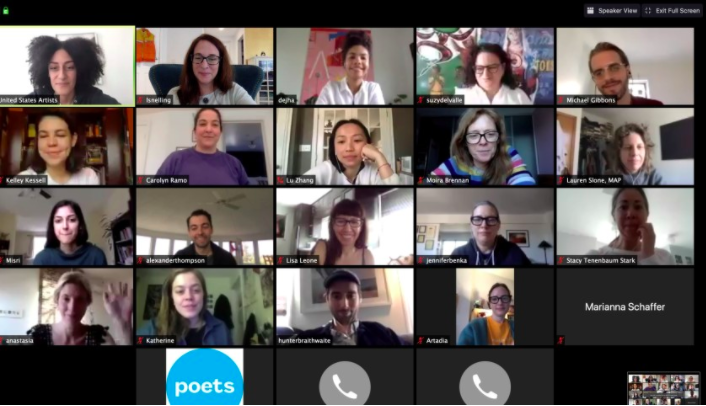We are all trying our best to make it through meeting after meeting via virtual meeting software. We are trying to keep alert, pay attention, not make judgements about the messy bookshelves behind Steve or wonder why Lilly doesn’t mute when her dog starts barking. Are we really getting anything done?
Teams play an important role in our organizations. They help us to coordinate, delegate, communicate, make decisions, collect important information, complete processes, and get critical feedback. Let’s not forget in this season of virtual team meetings- real work happens with the right people focused together on a goal. When you think of one more online hour slogging through a half-baked agenda, pause and reflect on the following elements of good teams.
10 Elements of Groups or Teams Work:
- Teams need both task work and social connections for effective work. That means that we need a set of work around tasks: (agenda, roles, agreement on purpose, decision making processes, etc.) AND we need work to develop social connectedness (trust, respect, collegiality, collaboration, etc.) for the work to occur.
- We need roles in our meetings to help us self-organize to get the work done. These responsibilities should be spread out across the group to share the leadership if possible. For each meeting, we need a time-keeper, recorder or note-taker, discussion facilitator and reporter to deliver info to others. Changing this up at each meeting keeps it interesting, challenging, and refreshing for participants.
- A clear goal is gold for team work, “a team with shared goals is more likely to complete its tasks on time and involve less internal conflict.
- Group cohesion is the increased sense of “commitment and attraction to a team.” The more cohesive the team, the more they enjoy the work, bring personal involvement and take pride in the group work.
- From author Daniel Levi, in Group Dynamics for Teams, “the leader is responsible for structuring the team’s interactions to ensure that the team completes its goal.” This is primarily done by “managing the structure of the meeting, but not its content.” How is this done? Levi describes three things on which the leader must focus: crafting an agenda to help structure the meeting of the team; sharing, comprehension and processing of key information in an environment that supports participation; remove or mitigate barriers for the team to be successful.
- Virtual teams tend to have less developed social connection and group cohesion. So, developing connections, creating unity and cohesion needs to be an intentional focus of leaders in virtual meetings.
- Conflict is part of every group process. These strategies can be used to prevent conflict: focus on developing cooperation, trust, create team contracts and develop norms for group behavior.
- When there is conflict: separate people from the problem; focus on the shared interests of parties (find common ground if possible); develop options that can be used to solve the problems; evaluation the options using objective criteria; try again and again. And remember, every conflict your group works through- gives them experience and success in working with conflict.
- Create space and context for safe sharing of opinion and disagreement. This is key in good teams. The focus is on the best possible outcome- so create an environment and group norms to support healthy sharing and ideas. Architecting participation is every leader's job.
- Culture of the team is highly influential. “Agreement about norms, values, and roles (about the team’s culture) reduces anxiety and improves communication in a team.” Help your team be high performing by attending to the articulation and agreement on expectations.
Leadership in Action: Rating Group Effectiveness
To help the team reflect on how they are working together and where energies need to be focused in the future for more effective team-work, have the group members rate the meeting. Together explore the findings and plan to address in future meetings.
Goals
1 2 3 4 5
Confused, conflicting Clear, shared
Participation
1 2 3 4 5
Few dominate, poor listening All get in, good listening
Feelings Expression
1 2 3 4 5
Ignored, not expressed Freely expressed
Diagnosis of Group Problems
1 2 3 4 5
Jump directly to solutions Seek basic causes before acting
Decision-Making Processes
1 2 3 4 5
Self-authorization, minority rule Consensus
Leadership
1 2 3 4 5
Autocratic, centralized Distributed, widely shared
Trust Level
1 2 3 4 5
Members do not trust each other Members have high trust
References:
Levi, D. (2017). Group dynamics for teams. Los Angeles, CA: Sage.
Schein, E. H. (1999). Process consultation revisited: Building the helping relationship. Reading, MA: Addison-Wesley
Kristin Wiersma | Consultant Team Lead | The Joshua Group | email
